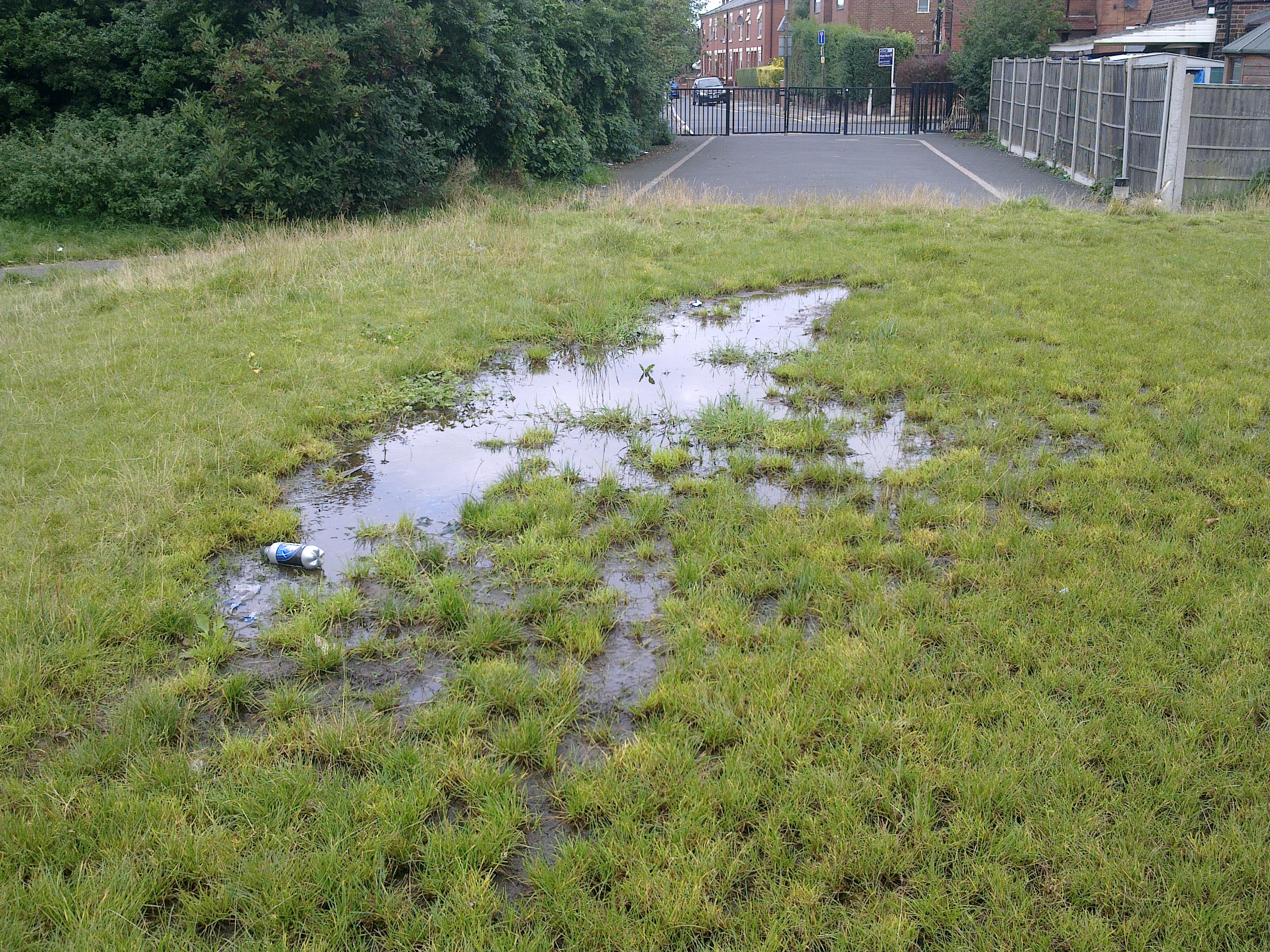Contamination
Vicki Bates, Strategic Head of Service & Monitoring Officer(Legal, Democratic Governance and Estate and Asset Management) at Stockport Council claims all questions regarding contamination on the site of a new primary school at Stockport are vexatious. I think she is dangerously wrong.
There was a Jackson’s brickyards site in North Reddish. These sites are notorious for their contamination. When they stopped making bricks they filled the dug-out claypits with rubbish at a time when no records were kept of what was dumped. In 1974 new regulations were brought in and this site was no longer viable as a tip. The land was grassed over and left. In 1974 three planning applications were lodged to build housing on the site, but Stockport Council refused these as the land was too dangerous to build on.


Stockport Council, at that time a completely LibDem run council, decided to build a new primary school on the site. Local people objected saying the site was tipped land and contaminated. The council was forced by public opinion to do contamination investigations. What they did was a very paltry one borehole, which they thought they could get away with.
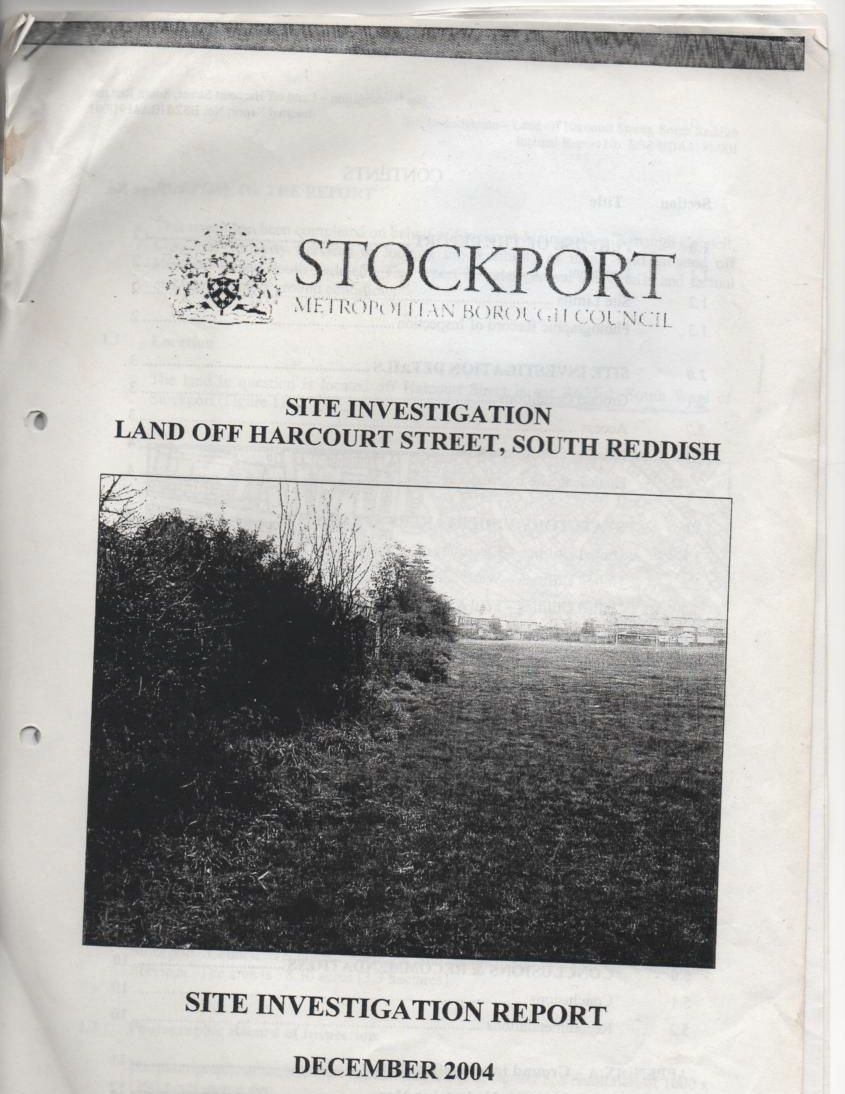
An excellent contaminated land officer at Stockport Council called Alison Bardsley wouldn’t accept this report, to her credit, and insisted further contamination investigations were carried out.
The further contamination report was seriously flawed. It found contamination which the council intended to deal with by planting prickly bushes on to keep the children away from it. The plants would have soaked up the contaminants and lost their prickly leaves. No solution whatsoever.
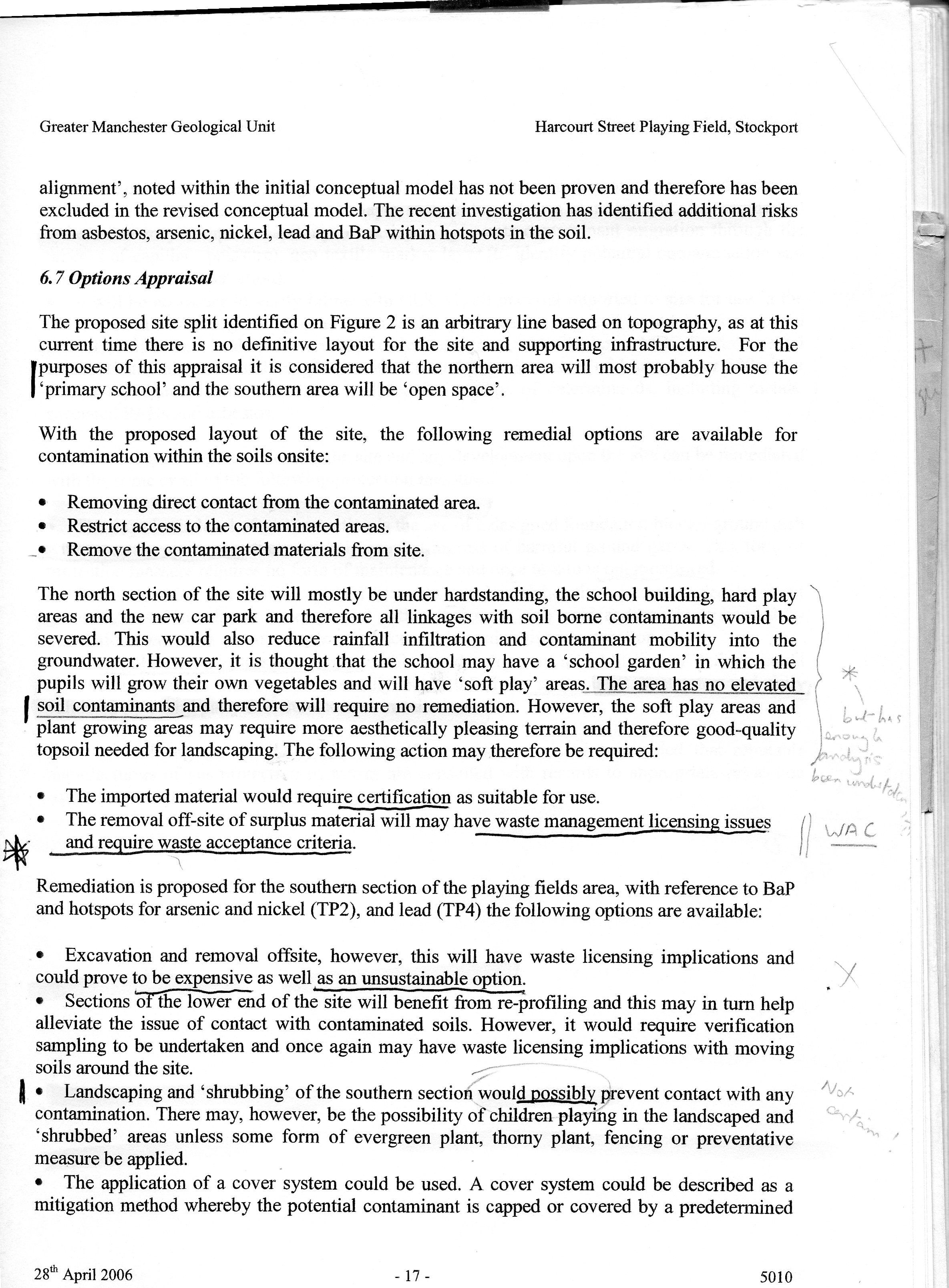
The council’s own contamination report for a sister Jackson’s Brickyards site at Adswood Tip, where they wanted to prevent development, stated that a site shouldn’t be developed if it were gassing more than 0.5% v/v Carbon Dioxide.
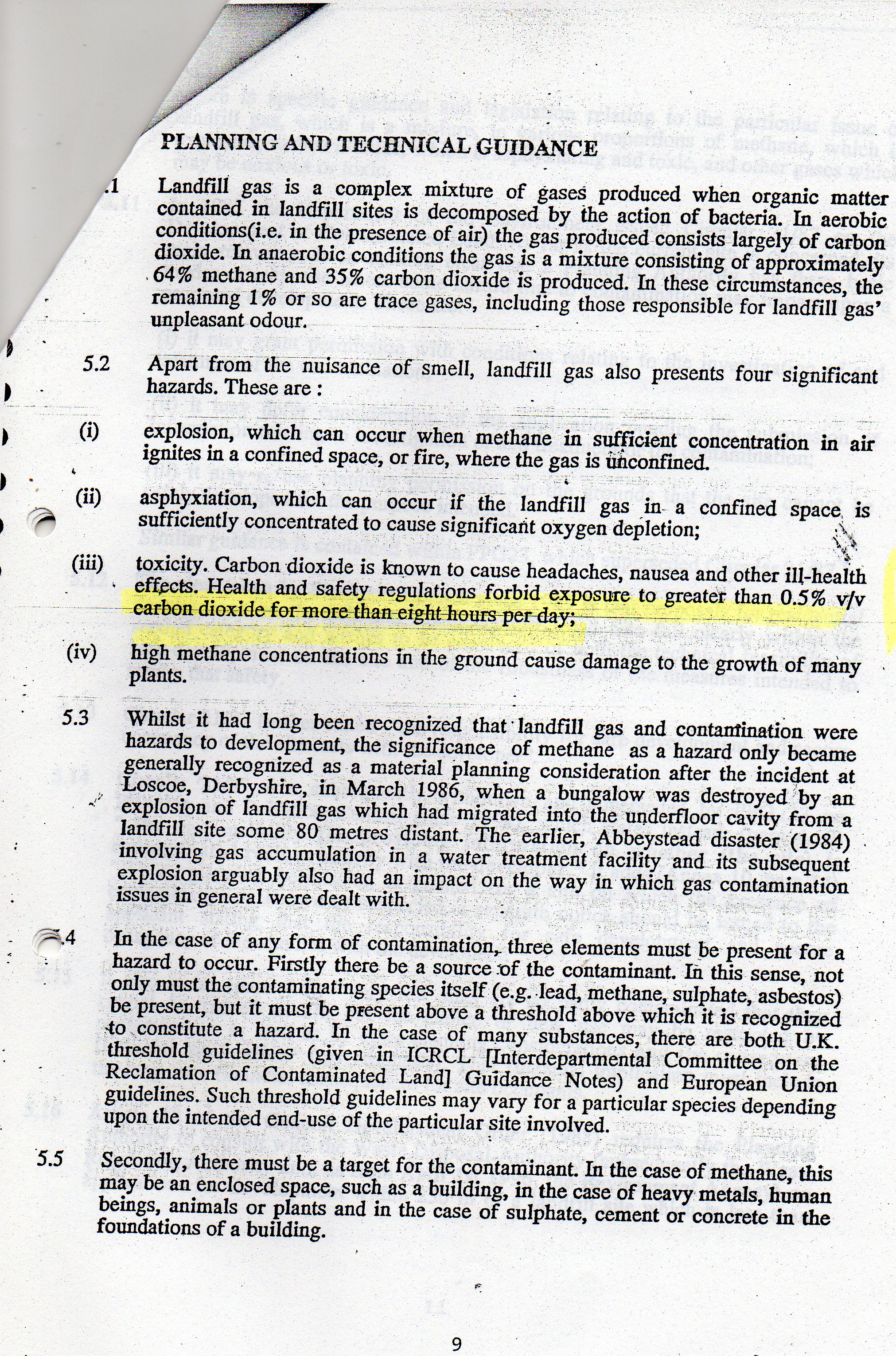
The proposed new primary school was gassing 14.7% v/v Carbon Dioxide.

No investigations were done where the school was actually going, which was directly over the old rubbish-filled claypits marked /////// on the map below, just around the periphery. The CBR investigations (California Bearing Ration) are to do with ground stability and nothing to do with contamination
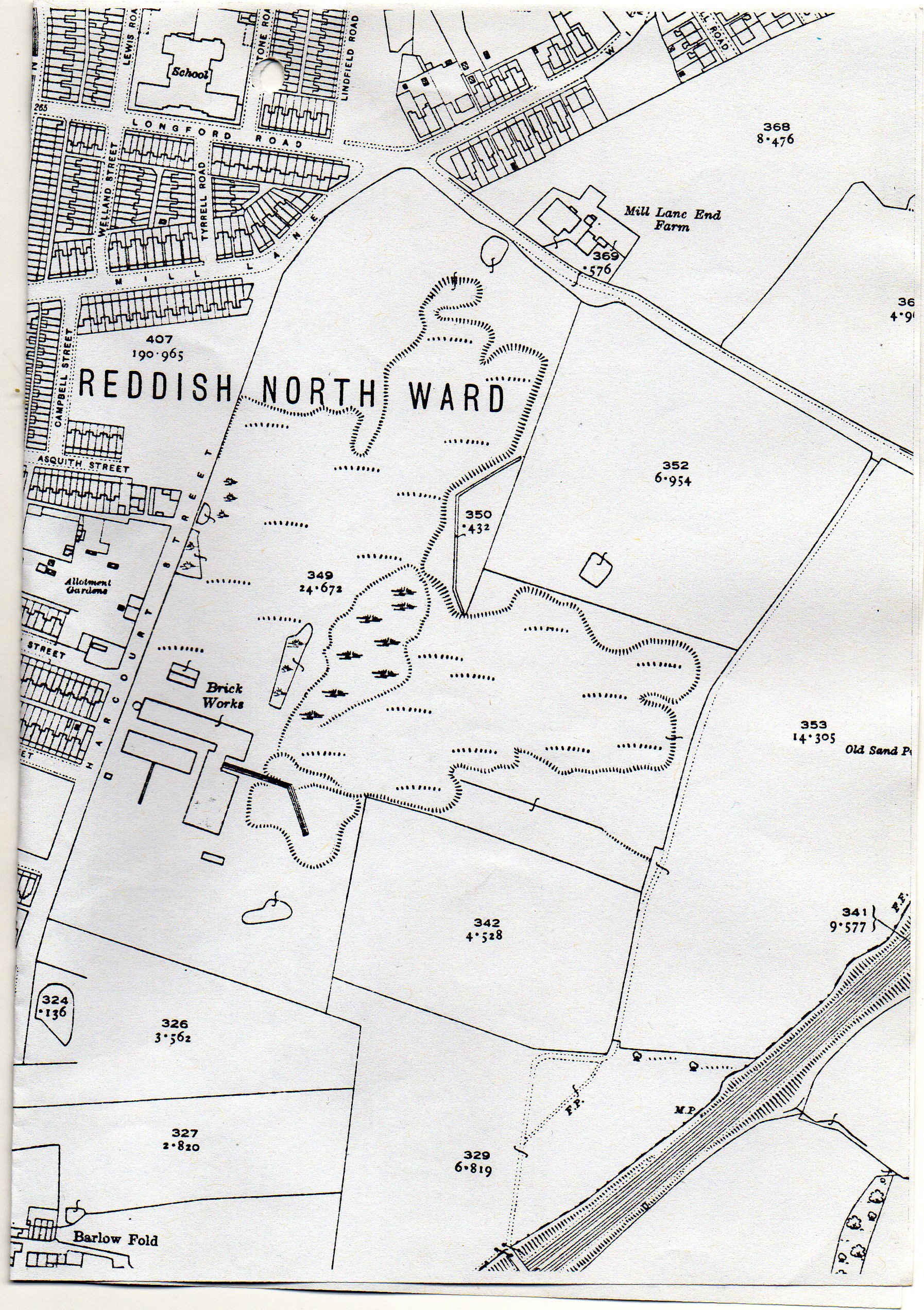
Under BS 10775 they should have done contamination investigations on a strict grid pattern but they didn’t disturb the football pitch, which covers a lot of the site where the school was built.

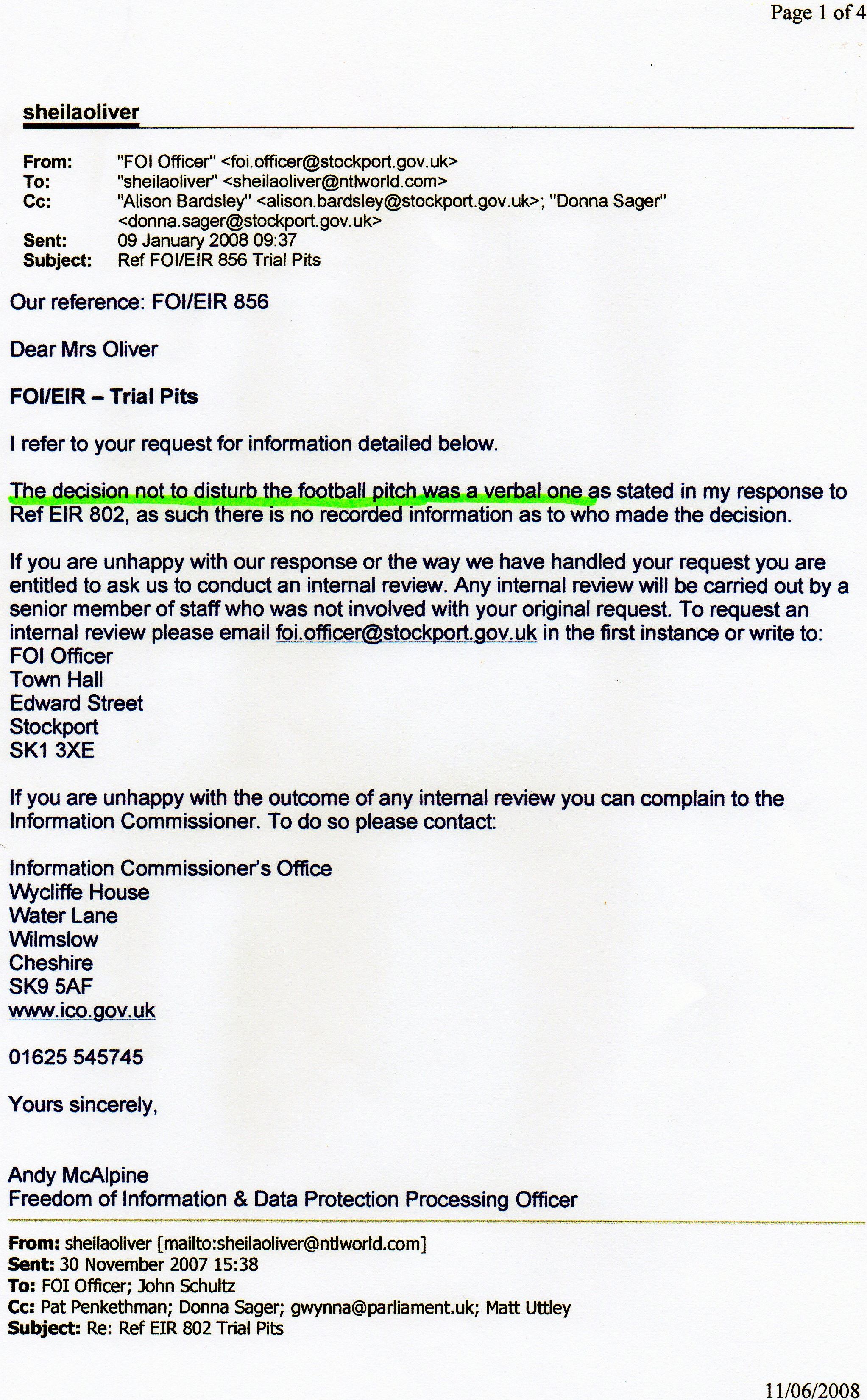

They found toxic hotspots on the site, so they should have considered the entire site to be contaminated and should not have made the decision not to disturb the football pitch, which was exactly where the new primary school was going.
BS 10175, which the Council and Greater Manchester Geological Unit (part funded by Stockport Council) claim to have complied with, states the contamination investigations should be carried out on a strict grid pattern. This was not done and GMGU admitted that they didn’t bother to investigate under the football pitch, which is where the school was going. “You have not complied with BS10175”, I objected. “Don’t be vexatious”, they replied. Weldon, Goddard, Schulz, Sager, Khan, Pantall, Smith, Candler, Khan, Derbyshire, Bodsworth et al.
I was pointing out at the time in council meetings and with FOIA questions that what they were proposing was unsafe for children. Their response – the entirely LibDem council executive – was that I was being “vexatious” for raising these issues and publicly defamed in council meetings and on the Internet as being vexatious and causing council officers and councillors work. I have in writing from a previous council Chief Executive that I have never been rude or offensive.
I went to see the Environment Agency in Warrington with all my documentary evidence and fortunately they took me seriously. However, when Stockport Council was told how to act by the Environment Agency, they simply ignored it.

A councillor, who was a chartered chemist, wrote to the local paper claiming the site was clear enough, and he denigrated my efforts to get the contamination properly dealt with.

I kept asking and asking whether the actions demanded by the Environment Agency had actually been carried out and the response from the LibDem executive at council meetings and the response to FOIA/EIR 2004 questions was that I was vexatious and they refused to respond.
Local people claimed four footpaths across the site. The Council applied to have those diverted in order to build the school. I objected as I felt the footpaths might be being diverted into areas of contamination, so for the resulting public inquiry and for that inquiry only further contamination investigations were carried in November 2009 which found that the site was entirely contaminated with lead, arsenic and brown asbestos.
The words of an amazing gentleman who was assisting me in this fight:
“It is inconceivable that the school
would actually be built following “failure to detect toxics”
– the tests were obviously unreliable especially having failed and caused
the reckless plans to go ahead. By then the financial aspects of this new
project were too great to resist, especially backed by the extraordinary claim
by the Council that the old industrial tip site could be made safe and used.
The Council had commissioned soil tests and found no contamination! There was
the influence of the Government grant of £2.2 million already in the till and
even spent on something else. But more soil tests, only carried out
because the Council had to prove to a diversion of footpath public inquiry that
the site was not contaminated found a variety of chemicals – lead, arsenic
and brown asbestos. What on earth were the previous experts – Greater
Manchester Geological Unit – doing to have missed all this or should
the question be who was in the pocket of whom?”
Contractors
then sifted the deadly material by hand – https://www.youtube.com/watch?v=b0rCPnP5H9o
Come on! How could they recognise the material, especially when the
experts couldn’t?
Drainage
Because
the school was on a toxic site, over an important aquifer, draining into a
fishing pond the Environment Agency stipulated £200k should be spent on drainage. What is left of the site for public use is
often sodden and unusable. How much was
actually spent on drainage? “Vexatious”
of me to ask.
